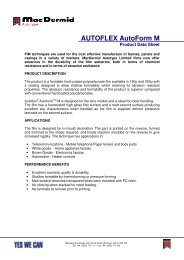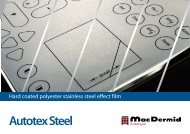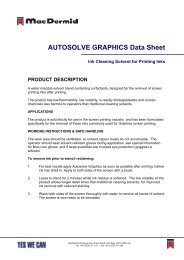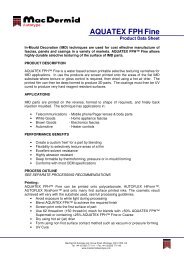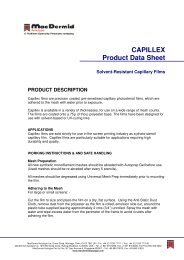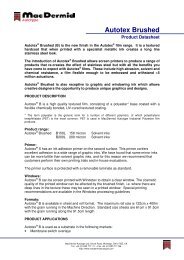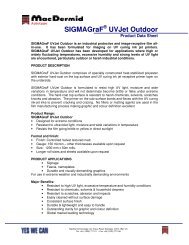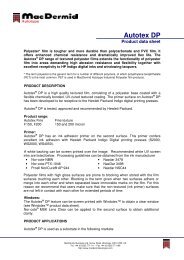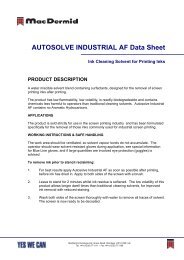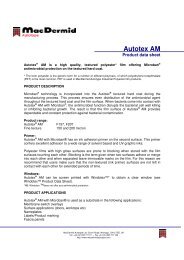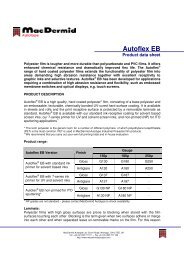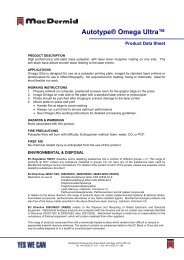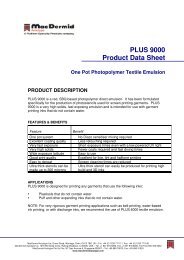Screen E-Book (.PDF) - MacDermid Autotype
Screen E-Book (.PDF) - MacDermid Autotype
Screen E-Book (.PDF) - MacDermid Autotype
- No tags were found...
Create successful ePaper yourself
Turn your PDF publications into a flip-book with our unique Google optimized e-Paper software.
When I first pointed this out to my marketingcolleagues they begged me not tosay it in public – it would make <strong>MacDermid</strong>look stupid. Because it’s so “obvious”that “ink doesn’t go through mesh”, the inkdeposit “must” be thicker in between thefibres than beneath them. But it takes onlya modest effort to prove to yourself thatthe thicker part of the print is, indeed, underthe mesh. Just take some careful microscopeimages of the mesh near someobvious feature such as a corner, then takeimages at the same magnification of theprint. When you line them up you findthat the thicker part of the print is underthe mesh fibres. In fact, you find that it isthicker under every other knuckle for reasons(I admit) I haven’t really worked out.Whilst we’re here we can explain another common problem in screenprinting. When liquid bridges snap they automatically produce a dropor two and these drops can easily fly off in strange directions. This isdue to the natural chaotic instability of liquid bridges. If you are doingreally wild printing then the flying drops can end up all over your print– classic ink splatter. When I first came up with the theory I had no ideathat ink splatter existed so I was gratified that the theory automaticallyproduced an explanation for the effect. Of course when the ink is verystringy then the liquid bridge doesn’t snap into drops but produces aclassic cobweb.There’s another big myth which we needto kill. It seems rather obvious that a highviscosityink should give a different (wet)ink deposit from a low-viscosity ink. Youoften hear advice that ink viscosity shouldbe carefully controlled in order to preservea uniform ink deposit. Yet the truth is theopposite. The viscosity of the ink has noeffect at all on the thickness of the ink deposit.How do I know this? Well, first of all a PhDstudent at Leeds University spent yearsof careful measurements confirming thisfact. But in reality we knew in advancethat there would be no effect. Why? Partlybecause the theory of the ink flow saysthere will be no effect (for the technicallyminded, this is because of a plateau in theeffect of capillary number on viscous pickup).Partly because of the basic fact thata hand-print gives essentially the sameink deposit as a machine print – and ifviscosity (and viscous drag) were importantthen there is no way you would getthe same deposit. As we will shortly seein the optional theory section, ink doesn’thave “a” viscosity it has many viscosities,so if ink deposit depended on viscosityit would vary hugely as different parts ofthe process changed. The final argumentcame from work by Dr Eifion Jewell. Thevery early U. Leeds theory had predicteda strong viscosity dependence. It was onlywhen Eifion produced data showing thatthere was no dependence did we discoverthe “capillary number plateau effect” which18



